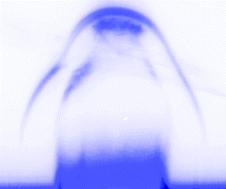Vibrationally excited ultrafast thermodynamic phase transitions at the water/air interface
Abstract
The extraordinary ability of the

* Corresponding authors
a
Departments of Physics and Chemistry and the Institute for Optical Sciences, University of Toronto, 60. St. George Street, Toronto, Ontario M5S 1A7, Canada
E-mail:
dmiller@lphys.chem.utoronto.ca
The extraordinary ability of the

 Please wait while we load your content...
Something went wrong. Try again?
Please wait while we load your content...
Something went wrong. Try again?
K. Franjic and R. J. D. Miller, Phys. Chem. Chem. Phys., 2010, 12, 5225 DOI: 10.1039/C000359J
To request permission to reproduce material from this article, please go to the Copyright Clearance Center request page.
If you are an author contributing to an RSC publication, you do not need to request permission provided correct acknowledgement is given.
If you are the author of this article, you do not need to request permission to reproduce figures and diagrams provided correct acknowledgement is given. If you want to reproduce the whole article in a third-party publication (excluding your thesis/dissertation for which permission is not required) please go to the Copyright Clearance Center request page.
Read more about how to correctly acknowledge RSC content.
 Fetching data from CrossRef.
Fetching data from CrossRef.
This may take some time to load.
Loading related content
